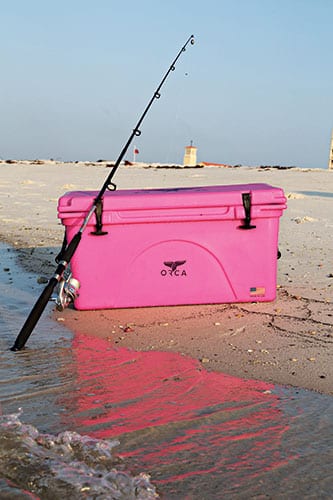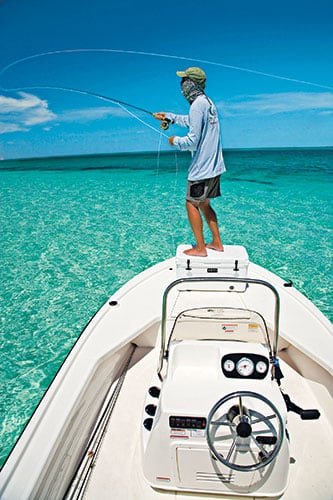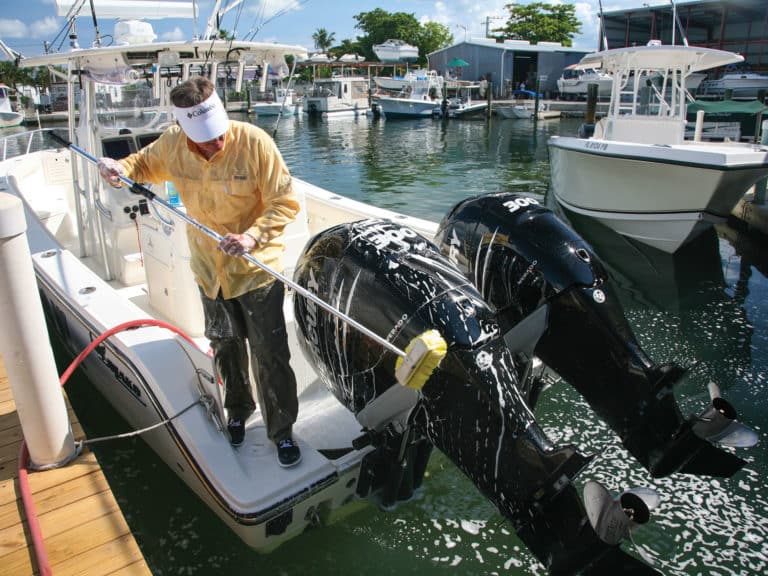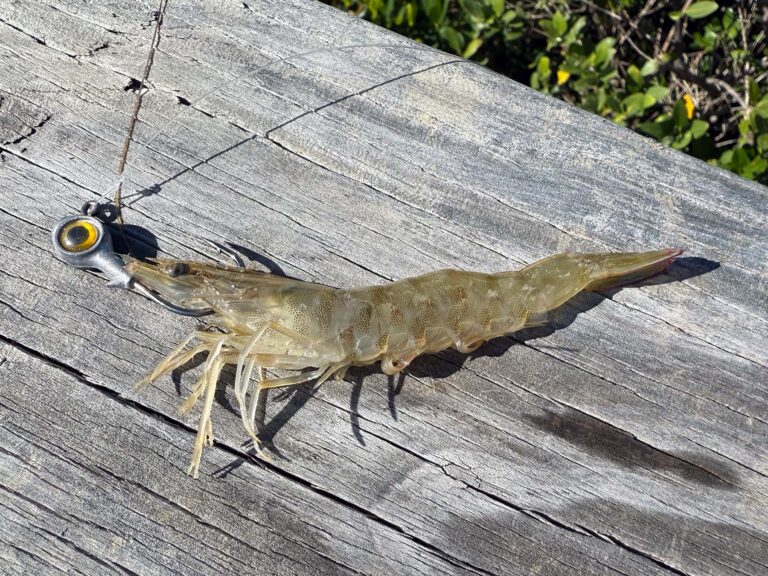At the start of the classic 1967 film The Graduate, Benjamin Braddock, played by a young Dustin Hoffman, is contemplating his post-college future. A family friend offers this advice: “Just one word — plastics. There’s a great future in plastics.”
Braddock didn’t follow that suggestion.
But many in the marine industry certainly did. Today computer-controlled design and manufacturing produces thousands of boat parts ranging from hatch covers to tackle centers. Another process, rotational-molding, helped launch the kayak craze. In rotational-molding, powdered polyethylene is added to a mold, which is then heated and constantly rotated by machines to ensure uniform thickness as the powder liquefies, forms the desired shape, and then cools. That same technique is now used to manufacture high-end ice chests.
“The bulk of roto-mold manufacturing produces fuel and water tanks for heavy equipment and industry,” explains Ryan Seiders, president of Yeti Coolers. Seiders, a former custom rod builder, and his brother, Roy, who manufactured aluminum boats, started Yeti in 2006. “We wanted to use the roto-mold technology to make a high-end product for consumers that was super tough and durable, high-impact resistant and looked great. The aesthetics was the biggest challenge. Fuel tanks don’t have to look polished. So we made a real effort to find the best roto-molders who could deliver the quality we needed. When you’re spending $200 to $300 on a cooler, the customer has high expectations.”
Pelican is another company that
has jumped into this growing high-end category. “Pelican has been the No. 1 name in cases for more than 30 years, and the premium cooler was an obvious evolution,” says Mike Oken, Pelican’s manager for cases. “There were other products on the market, but we knew we could improve the existing designs, so we went to work. We ‘Pelicanized’ it, so to speak.” Pelican currently makes six heavy-duty cooler models, with another on tap, and all feature stainless-steel hardware, molded-in tie-downs, and a ruler in the lid to measure fish.
Yeti, Pelican and other roto-molded coolers use injected polyurethane foam for insulation. The standard is at least 2 inches of thickness in the cooler sides. The lids and bottoms often have up to an extra inch of foam. All tout ice retention for days, but that quality is relative, Seiders says.
“There’s too much emphasis on ice retention,” he explains. “Not everyone needs to keep ice for a week. For most saltwater trips, a couple of 20-pound bags will work just fine, and you’ll have ice left over at the end of the day.”
Seiders recommends starting off with contents that are cold or frozen instead of room temperature to maximize the chilling effect, then filling the remaining space with ice since air is a poor insulator. The quality of ice is also important.Bags of ice stored in a freezer outside a tackle shop, for example, are often melting and wet due to the heat, and the freezer door opening constantly. Ice stored indoors is usually dry and very cold. Block ice is a better choice than cubes. Adding a saltwater brine mix is another trick to help firm the flesh of fish and bait to keep them well preserved.
Anglers in the market for premium roto-molded coolers are often shocked by higher price tags than conventional plastic coolers. But several factors justify that extra markup, Seiders says. Besides extreme durability and lengthy warranties, the slow, labor-intensive manufacturing process also requires large amounts of raw materials. Yeti uses solid billet aluminum molds and two-axis rotational machines to produce the one-piece box and separate lid. Production is limited to 20 parts per day per mold to ensure high tolerances, and the premium components have to be assembled and inspected by hand. Optional accessories make these coolers more angler-friendly as well.
“My brother and I both grew up fishing the Texas coast, so our accessories are designed for the marine environment,” he says. “One of the most popular is the Seadek top, which gives extra traction and cushion when the cooler doubles as a casting platform. Seadek is available for every size cooler we make. We also offer a tie-down kit that allows access to the contents. Seat cushions with marine-grade vinyl and stainless snaps are another option, and for 2014 we’re adding vertical rod holders to the accessory line. Our T-latches can even be easily reversed to eliminate snags with fly lines. We’re not just designing coolers, we’re designing them with fishermen in mind.” Seiders adds that the majority of Yetis destined for the coast are white, although other colors, such as ice blue, to match custom gelcoats, are gaining popularity.
Both their rugged durability and smooth finishes add to the ease of care and low maintenance characteristic of roto-molded coolers.
“Our Elite Coolers are built to last a lifetime, and basic washing with soap and water is all you should need to keep them in top shape,” Oken says. “In some real stinky situations, take it to the car wash and blast it with a pressure washer if need be.”
Roto-molded coolers won’t fit every boating need or budget.
But like any quality equipment, you generally get what you pay for. And with this particular piece of gear, that means they’ll last well into the future
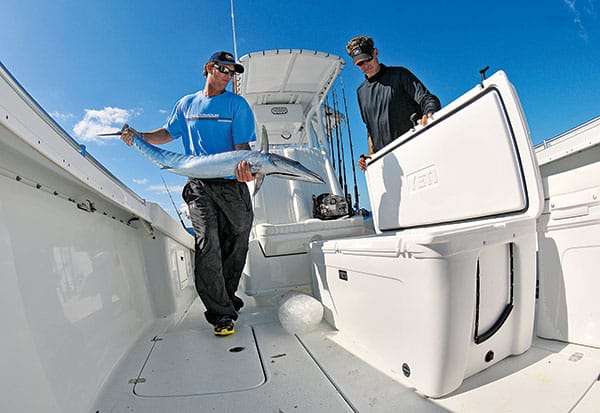
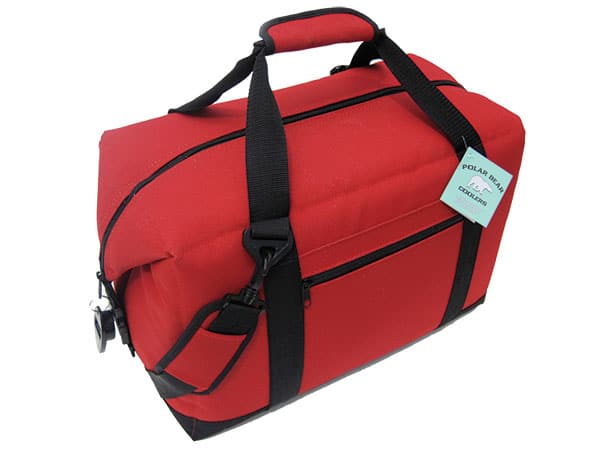
Soft Choice
